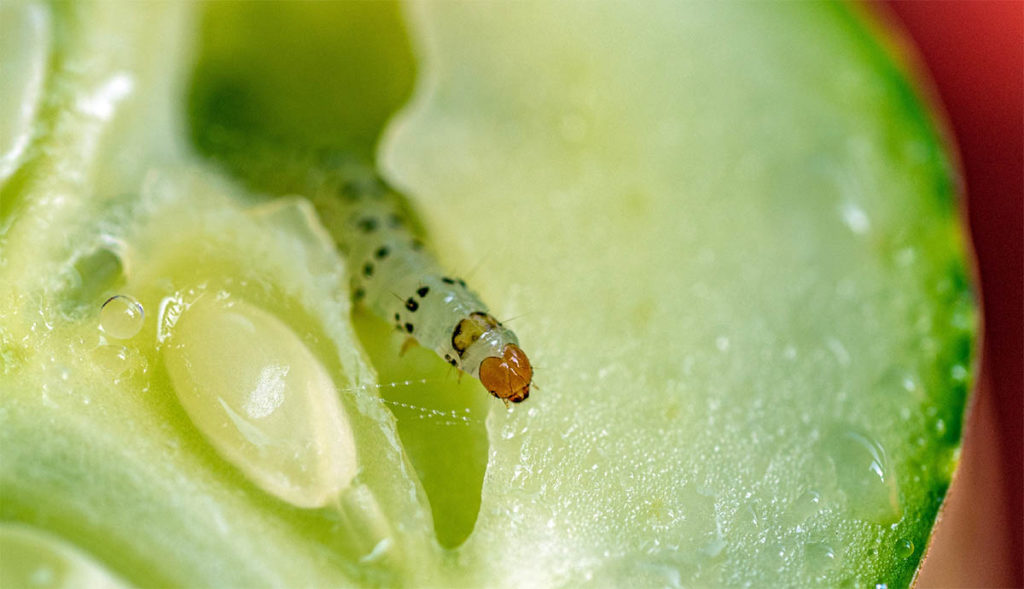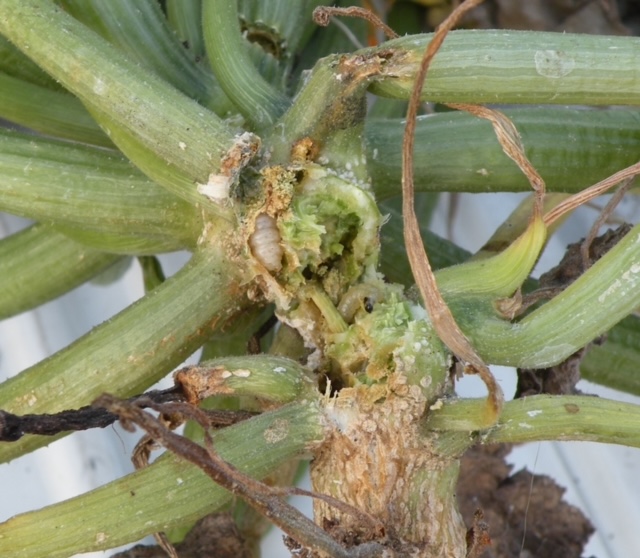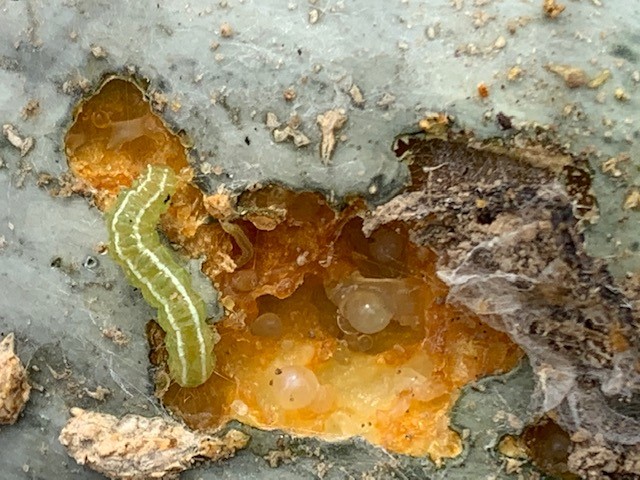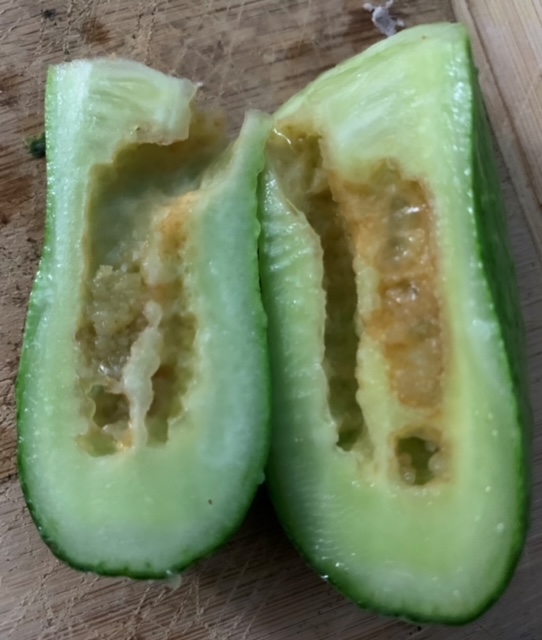By Ayanava Majumdar, Olivia Fuller, David Lawrence and Jacob Kelley

Squash and related cucurbits are favorite summer vegetables in farms across the Southeast. Though cucurbits grow fast under the right conditions, numerous insect pests feeding at various crop stages can make cucurbits a messy ordeal! In Alabama, cucumber beetles, squash vine borers and squash bugs arrive routinely during the young vegetative to later stages.

Photo by A. Majumdar
A TRIPLE THREAT
Squash vine borer (SVB, Melittia cucurbitae) is actually part of a borer complex that consists of two additional species: pickleworm (PW, Diaphania nitidalis) and melonworm (MW, Diaphania hyalinata). PW and MW are related species; adult moths have large wings with brown bands on the edges and bushy tails at the end. When at rest inside the crop canopy, their wings are wide open. They often fly short distances if disturbed.
SVB is a major pest that can be monitored using reliable pheromone traps on farms to record activity periods and population pressure. Last year, wet weather in Alabama prolonged the emergence and activity of these moths. Growers experienced more than twice the activity of SVB moths in sticky traps in 2021 compared to 2020. SVB are highly active moths with wasp-like behavior and coloration, except that their flight occurs very early in spring in broad daylight with female moths laying individual eggs at the bottom of plants.
SVB is worse on organic farms as the pest tends to build up over time and has one or two overlapping generations, whereas the PW and MW are migratory pests moved around by strong winds and multiple generations. Look for cream-colored SVB larvae at the plant bases; activity is marked by a profuse amount of feces. PW get worse on late-planted crops with heavy feeding from greenish larvae on flowers and fruits (that is, higher plant parts). In 2021, MW outbreaks were intense, which baffled many producers. The green larvae with two white longitudinal lines on the top make unique webs on leaves and fruit.

Photo by A. Majumdar
MANAGEMENT METHODS
Preventing the borer complex can be quite a challenge depending on the year and pest pressure. Some publications indicate tolerance of certain cultivars (e.g., butternut squash and certain winter squashes) against SVB. Typically, conventional cultivars of yellow squash may quit production when infested with SVB, especially in drought conditions. Timely planting and harvesting are critical for PW and MW.
Certain Hubbard squash cultivars, like Baby Blue and New England in mixed stands, may be used as perimeter trap crops, but results have been inconsistent in Alabama. This may be due to weather conditions and high pest activity.
Use of lightweight pest-exclusion fabric may be a useful tactic, but producers must cover the plants early in the season and remove the fabric when the plants start vining. The idea behind tightly sealed pest-exclusion fabric is to deter moths from getting to the plants for early egg laying. This may prolong plant life by several weeks.

Photo by A. Majumdar
HELPFUL TIPS
Specialty crop growers should scout weekly or more often and keep records of pest infestations and any pesticide applications.
To stay in touch with additional integrated pest management research and pest alerts in Alabama, subscribe to the Alabama IPM Communicator E-newsletter (www.aces.edu/ipmcommunicator).
Use the Farming Basics mobile app to identify common insects, connect to beginning farmer resources and contact commercial horticulture regional Extension agents in Alabama.
Ayanava Majumdar is an Extension professor at Auburn University. Olivia Fuller, David Lawrence and Jacob Kelley are regional Extension agents for the Alabama Cooperative Extension System.










